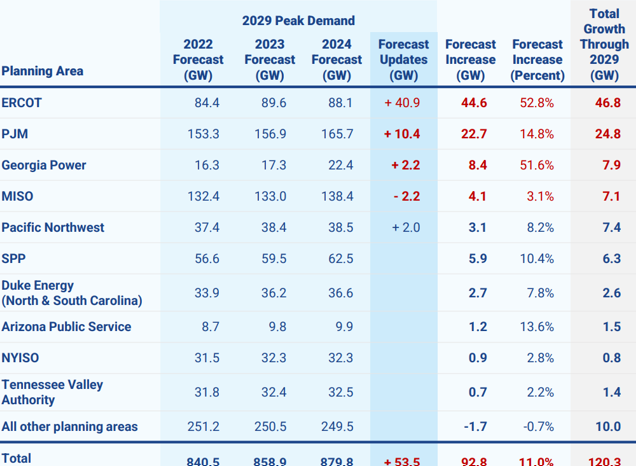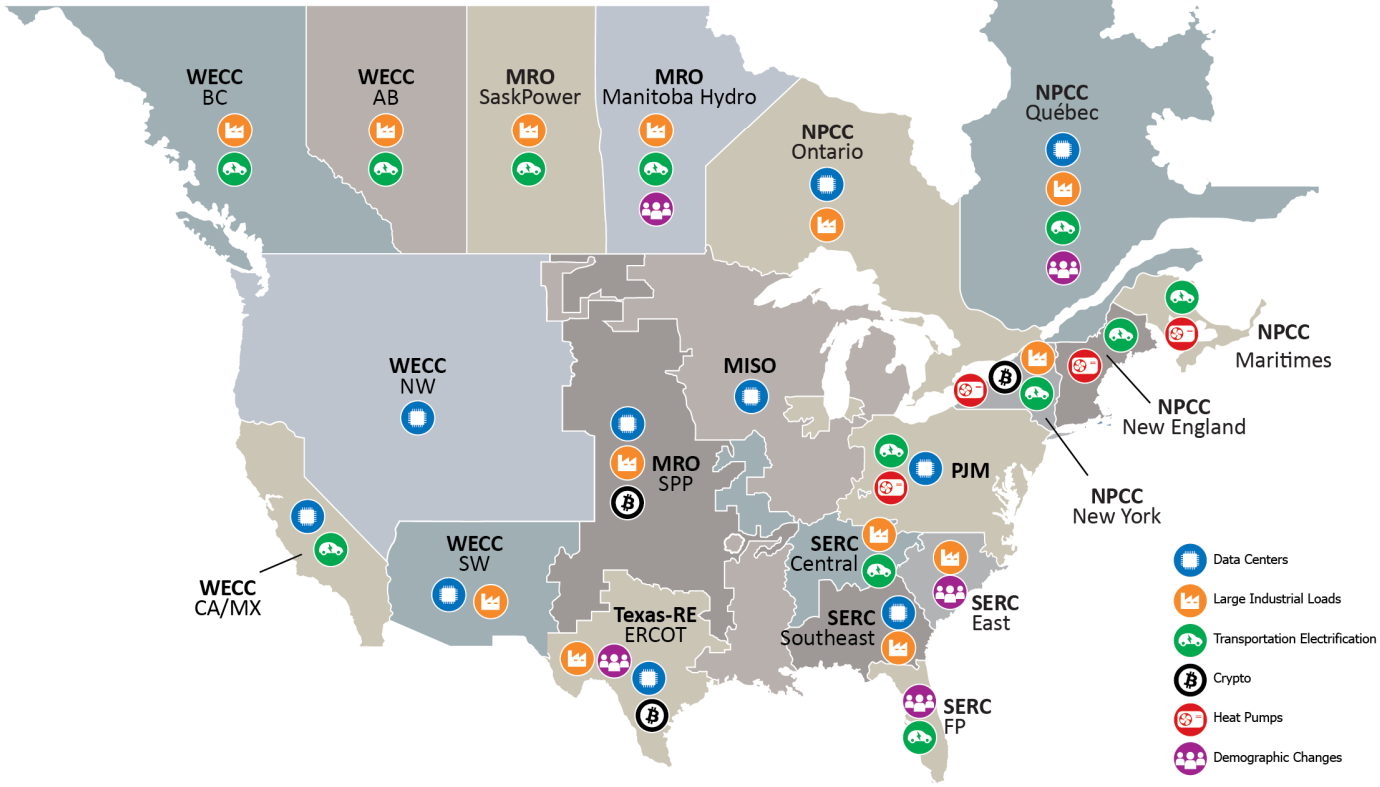Register
Strategy
•
September 11, 2025
4:00 PM - 5:00 PM GMT
In this session, the Darcy research team will host a panel discussion exploring how large loads can provide flexible demand-side services to the grid. As utilities face accelerated load growth from data center buildouts, industrial reshoring, and industrial electrification, demand flexibility is emerging as a promising strategy for fast-tracking interconnections, enhancing grid asset utilization, and ensuring grid reliability.
Power & Utilities
About the Event
Thanks to data centers and other “large load” facilities, the power sector is in “a scramble to respond to growing load,” as consultancy Grid Strategies puts it in their latest Strategic Industries Surging report.
Planning Areas with Greatest Increase in Summer 2029 Peak Demand, source: Grid Strategies - Strategic Industries Surging (2025)
Along similar lines, NERC, in its latest long-term reliability assessment, calls data centers and large industrial load an “emerging issue,” noting “growth in large load parcels like data centers and industrial facilities pose various challenges for system planners and operators,” such as the growing concern for resource adequacy, as “planning reserves … are projected to fall below reserve margin requirements, as new generation coming on-line could be insufficient to make up for generator retirements and load growth.”
Primary Demand Drivers by Assessment Area, source: NERC - Long-Term Reliability Assessment (2024)
This load growth boom represents major challenges and opportunities for power sector stakeholders. And most organizations are evaluating "all of the tools in the toolbelt” to support the continued build out AI infrastructure, reshoring of manufacturing, and decarbonization of emissions-intensive industries.
Within that set of tools resides the time-honored concept of load flexibility. A tenured method for some customer segments (e.g., interruptible tariffs, A/C cycling), but still fairly nascent within most parts of the “large load” arena.
How much potential does this tool have to address load growth estimates north of 100 GW? What guidance might be derived from existing load flex programs? And how welcome will utility control signals be when they come knocking at the front door of a data center?
In this event, such questions will be addressed by a panel of experts.
About the Panelists
- Ryan Hledik is a Principal at the Brattle Group, and has consulted for clients across 35 states and nine countries, supporting them in matters related to load flexibility, energy storage, distributed generation, electricity rate design, electrification, energy efficiency, and grid modernization. Recently, Mr. Hledik co-authored a report titled Electricity Rate Designs for Large Loads: Evolving Practices and Opportunities, so he will share insights on rate design for large loads.
- Tyler Norris is a Ph.D. student at Duke University’s Nicholas School of the Environment, where his research focuses on electric power systems. He is an awardee of the university’s James B. Duke Fellowship and serves in the research group of Dr. Dalia Patino-Echeverri, Gendell Associate Professor of Energy Systems and Public Policy. Recently, Mr. Norris co-authored a report titled Rethinking Load Growth: Assessing the Potential for Integration of Large Flexible Loads in US Power Systems

